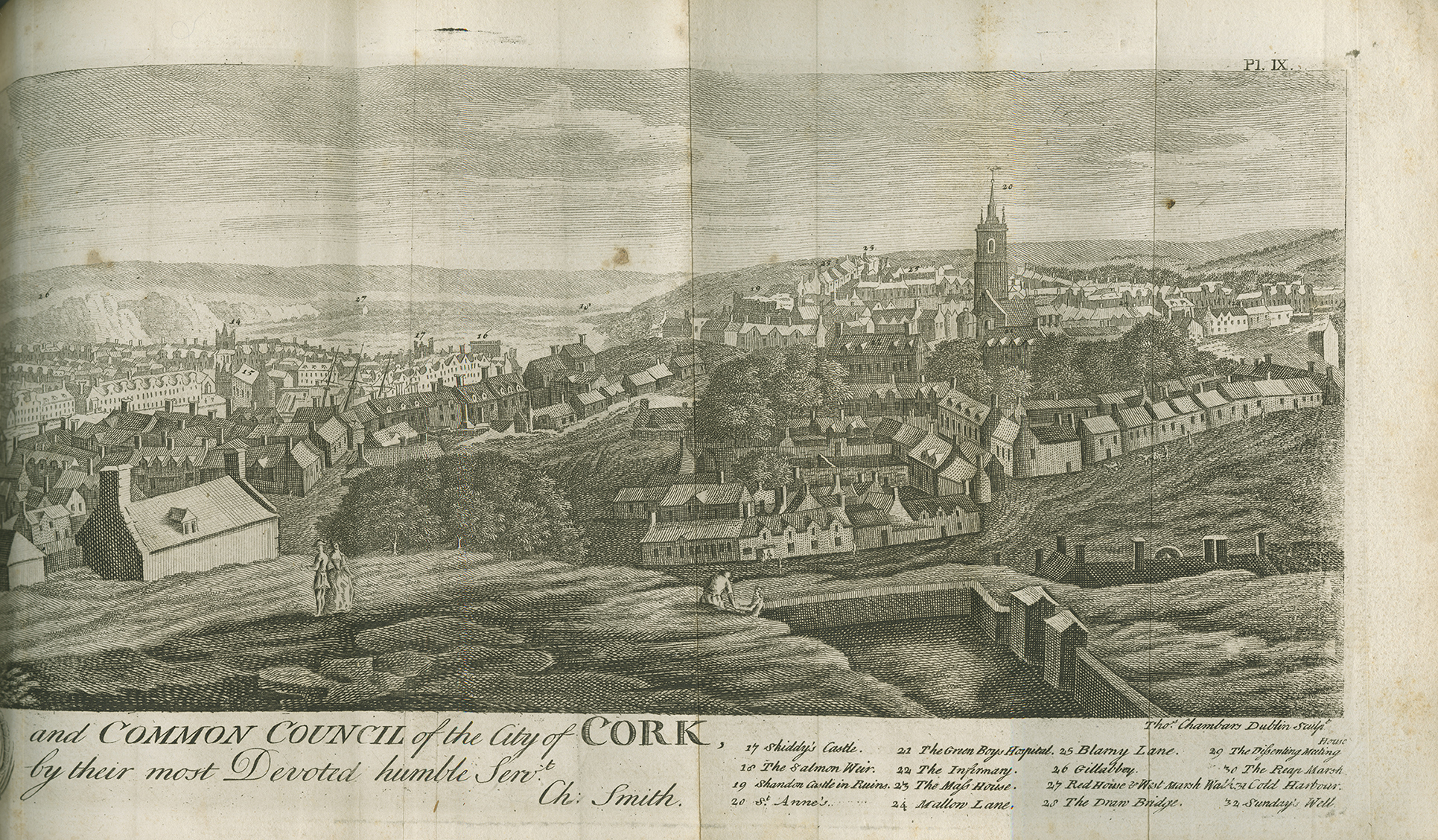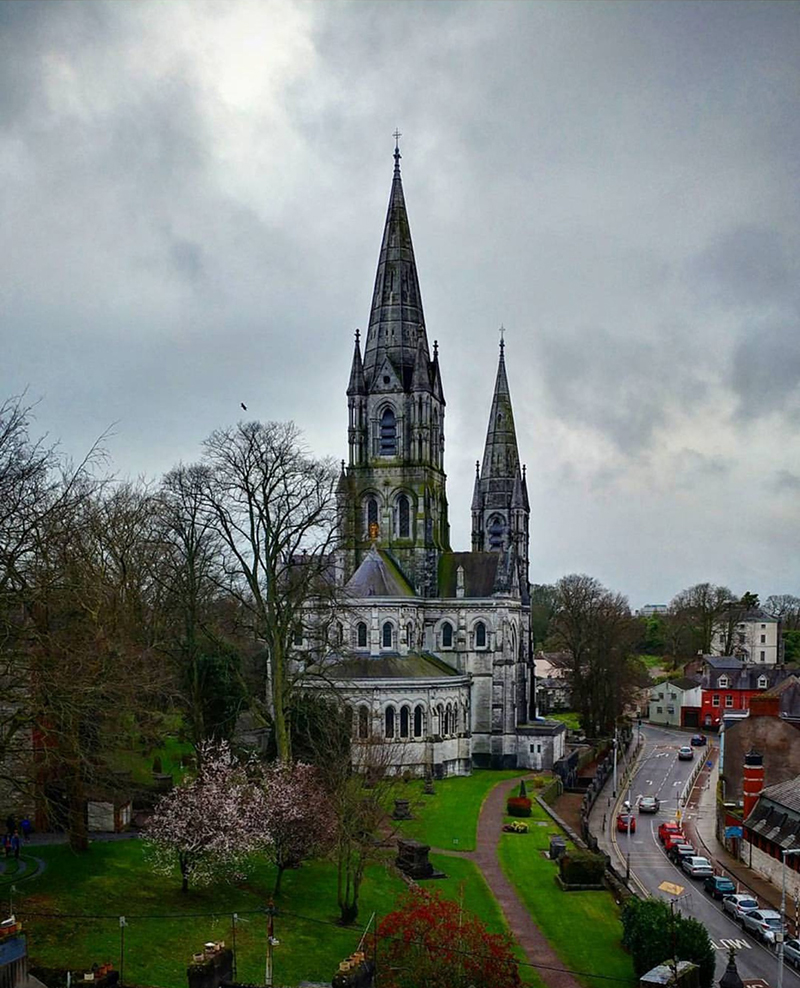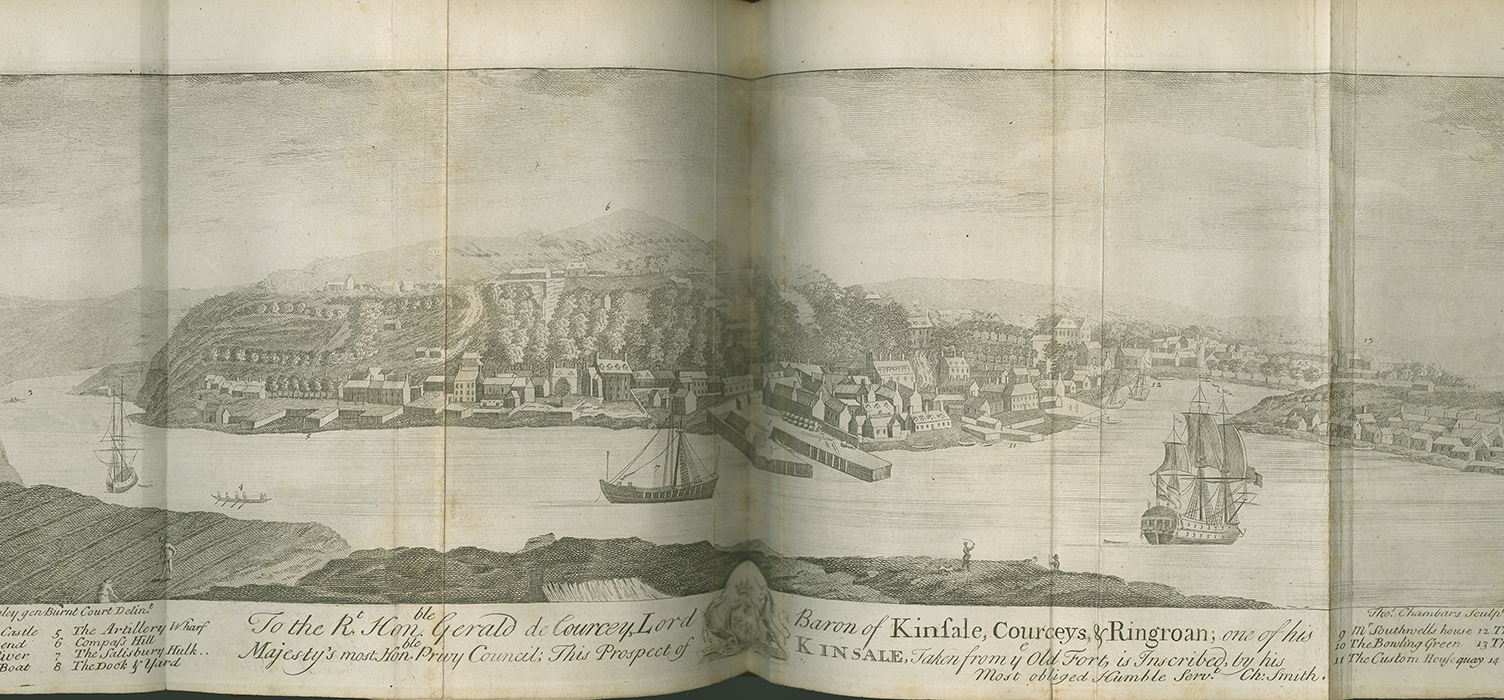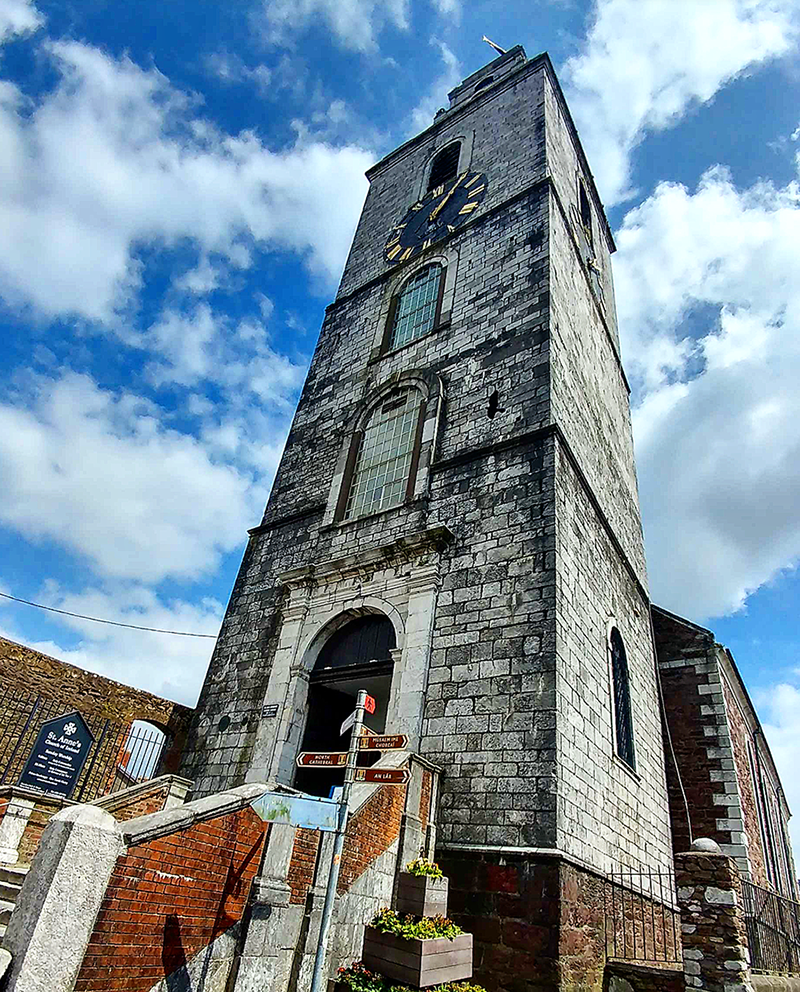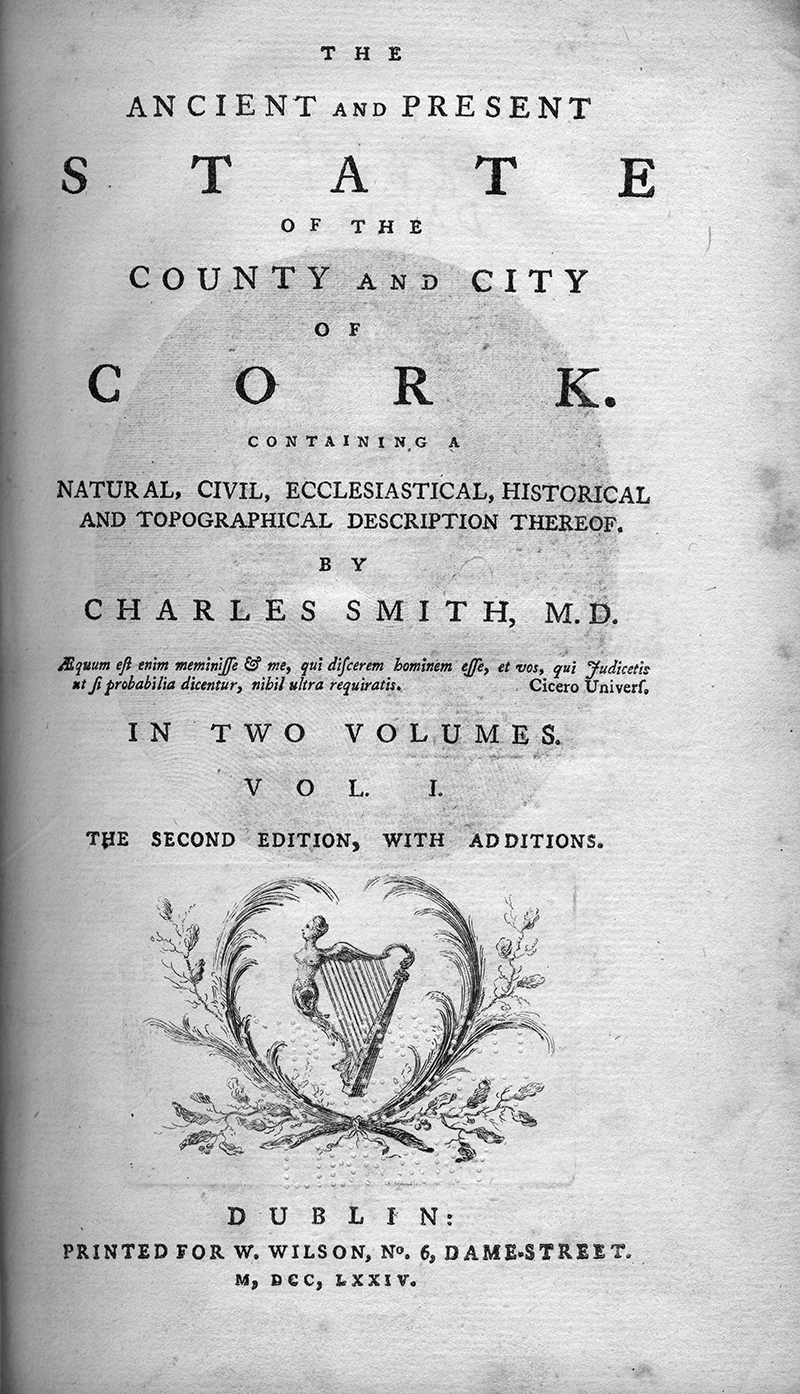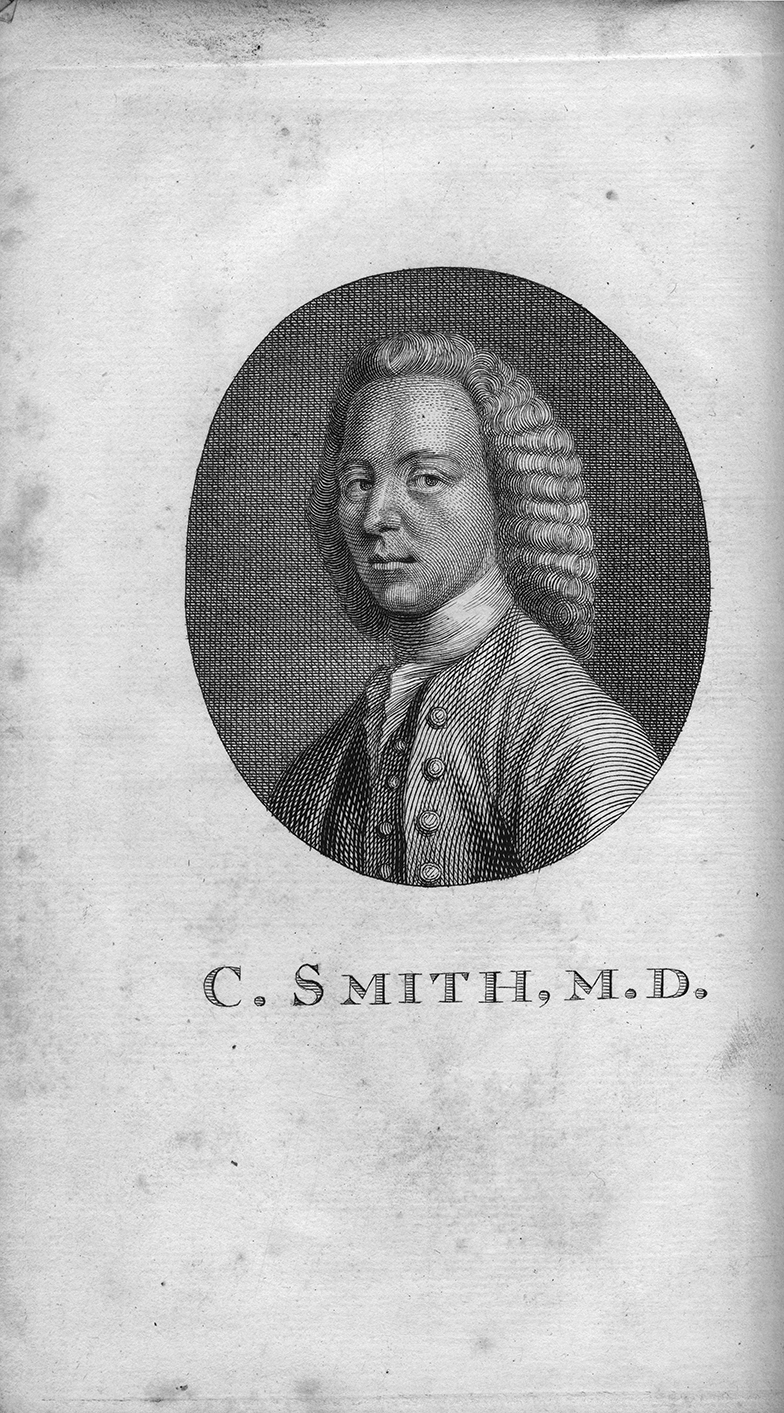By: Savannah Gulick, Archives & Rare Books Library student assistant
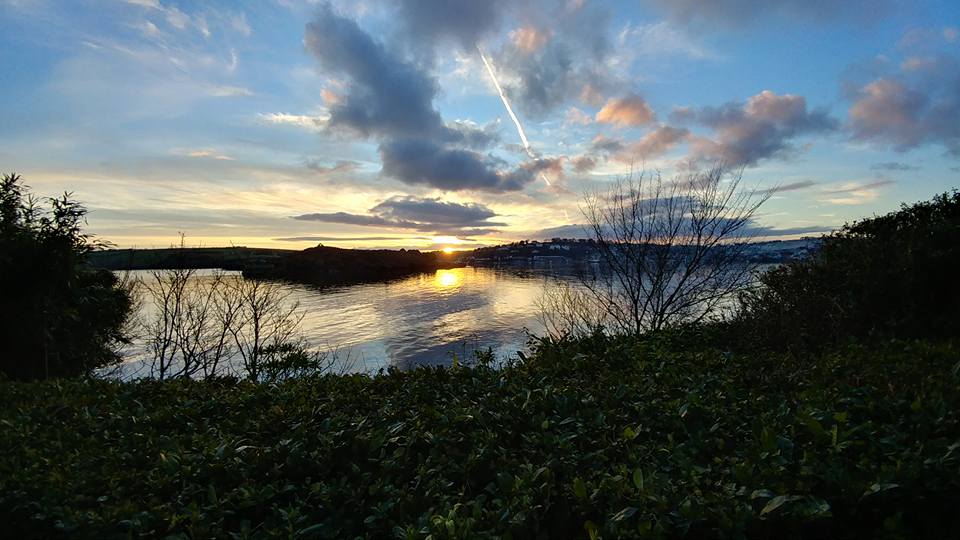
County Cork, Ireland lies in the southwest region of the country and contains many historically famous cities and buildings, such as Cobh (formerly Queenstown) where the Titanic last docked before its disastrous maiden voyage 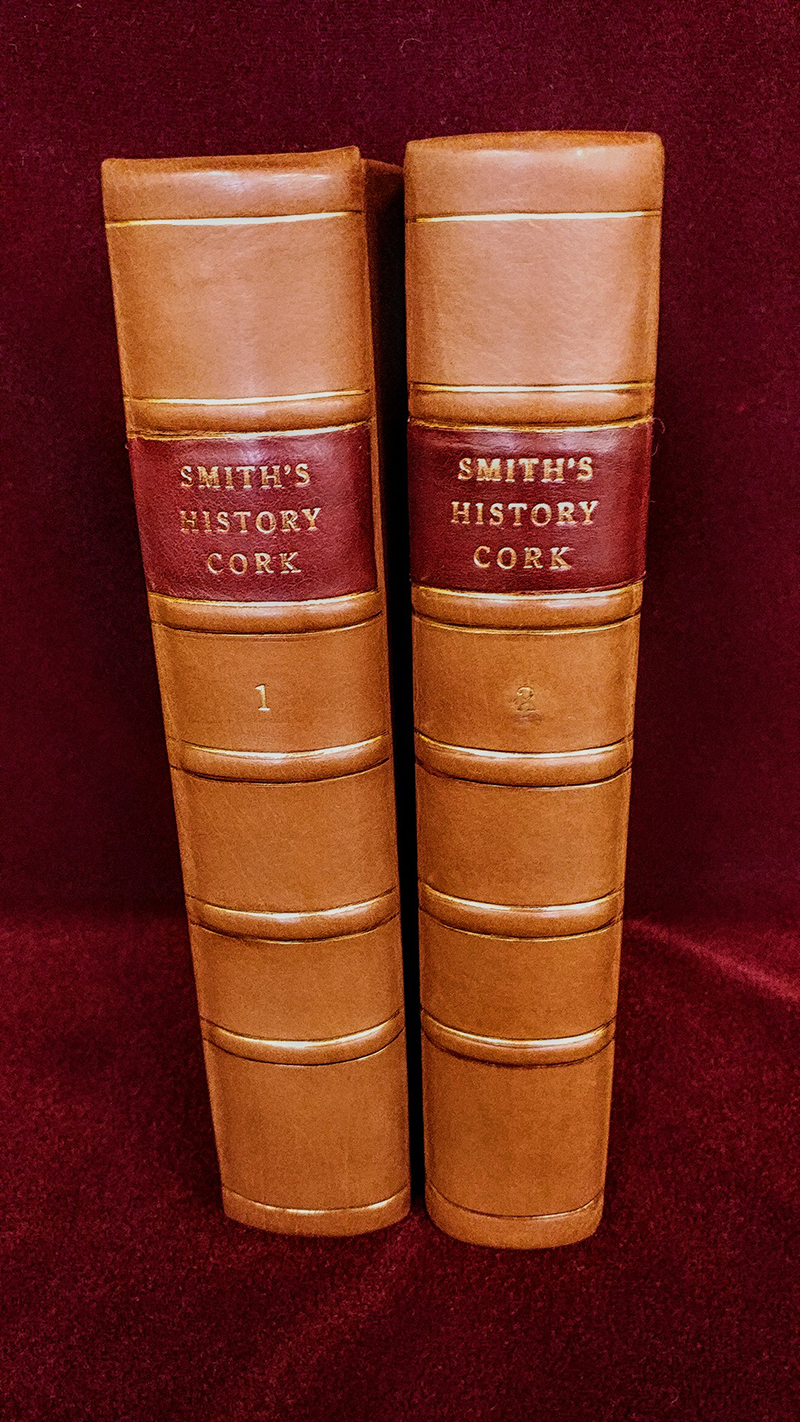 in 1912, and Cork City itself, the second largest city Ireland. In terms of its beauty and traditions, this particular county has not changed very much over the centuries, though like the rest of Ireland, has seen economic hills and valleys as well as its own take on revolution and patriotism in the island. In Charles Smith’s two-volume 1774 work in the Archives & Rare Books Library, The Ancient and Present State of The County and City of Cork, the author discusses the vast history of County Cork up to his own time in the 18th century. He explains all aspects of Irish history in Cork, ranging from wars to flora and fauna with maps and photos to illustrate what he is discussing. The volumes are part of the growing body of Irish literature in ARB and are consulted frequently by students and scholars interested in urban development, the history of cities, and the general history of Ireland. Smith’s work also includes maps and engravings of Cork City and the surrounding countryside.
in 1912, and Cork City itself, the second largest city Ireland. In terms of its beauty and traditions, this particular county has not changed very much over the centuries, though like the rest of Ireland, has seen economic hills and valleys as well as its own take on revolution and patriotism in the island. In Charles Smith’s two-volume 1774 work in the Archives & Rare Books Library, The Ancient and Present State of The County and City of Cork, the author discusses the vast history of County Cork up to his own time in the 18th century. He explains all aspects of Irish history in Cork, ranging from wars to flora and fauna with maps and photos to illustrate what he is discussing. The volumes are part of the growing body of Irish literature in ARB and are consulted frequently by students and scholars interested in urban development, the history of cities, and the general history of Ireland. Smith’s work also includes maps and engravings of Cork City and the surrounding countryside.
I recently returned from spending five months in Cork City where I studied for a semester at University College Cork, among Ireland’s largest universities. As I work in ARB and reminisce on my days in Cork while reading this particular book, it amazes me how many of the buildings I frequented during my time abroad were in existence when Smith’s work was written. The maps he included contain many buildings that I casually walked by when I bought dinner for the night from the famous English Market, not even realizing how old it was. I guess most of the time I was too focused on lugging my groceries home across the city’s numerous hills! On the south side of the River Lee, a massive cathedral stands and can be seen from practically any point in the city. This is St. Fin Barre’s, consecrated in 1870 and as beautiful on the outside as it is inside. Across the River Lee to the north is St. Anne’s Church, a major tourist spot where you can ring the church bells (if you can make the climb to the top!) and built on the remains of Shandon Castle and St. Mary’s. One of my favorite places to go outside the city was Kinsale where Smith describes the battles that took place at the mouth of the harbor. He mentions the two forts that defended the mouth from invaders, which are still accessible to this day! They are a brisk 45-minute hike along the famous Scilly walk on either side of the town.
While I could babble on for a long time about the similarities between Cork City and County in 1774 and today, suffice to say that to walk down the streets of Cork is like walking through history itself.
To learn more about ARB’s holdings of rare books on Ireland from the 17th century to the 21st – history, geography, poetry, drama, literature – just call us at 513.556.1959, email us at archives@ucmail.uc.edu, visit us on the 8th floor of Blegen Library, check out our web page at http://libraries.uc.edu/arb.html or go to our Facebook page, https://www.facebook.com/ArchivesRareBooksLibraryUniversityOfCincinnati.
- St. Anne’s Church

